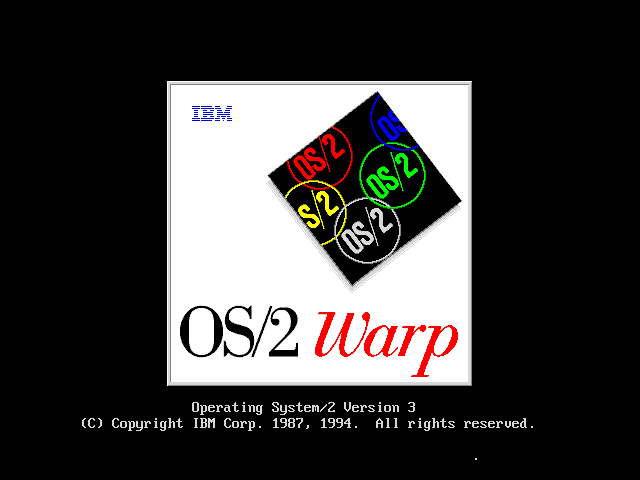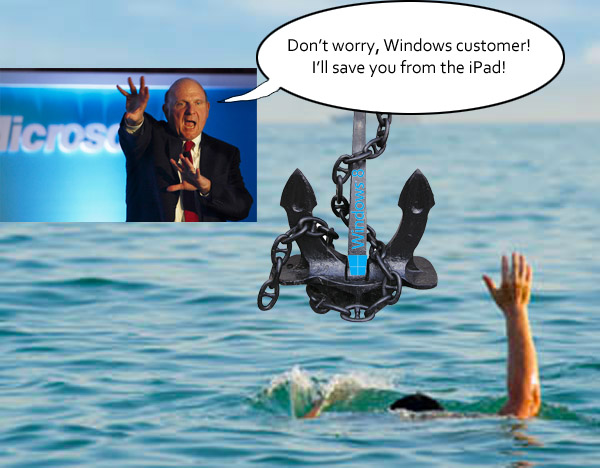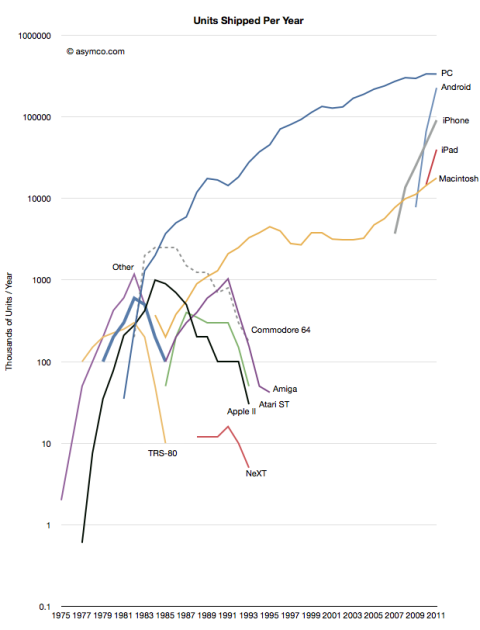
Science fiction and technology writer
Popular blog posts
Recent forum posts
Discussion Forum
Discussion forumShowing topics tagged as: Operating
Half an Operating System - the triumph and tragedy of OS/2
Post #: 219
Post type: Blog post
Date: 2013-11-25 10:47:19.000
Author: Jeremy Reimer
Tags: Computers, Operating Systems

Writing is a funny thing.
As a young nerd, I was fascinated by personal computers and operating systems, and became a huge advocate of a funny operating system called OS/2. I spent a lot of time arguing about its merits on Usenet forums like comp.os.os2.advocacy. I moved on to Windows 95 when it was released, but always had a soft spot in my heart for IBM’s failed OS.
Twenty years later, I felt like the need to tell the story was welling up inside me until I was about to burst. I wrote the entire first draft in two days. Today, the article has been published on Ars Technica.
So did I take 20 years to write it, or two days? I guess it depends on your point of view. But I’m glad I wrote it.
Views: 7556
What was the deal with OS/2 anyway?
Post #: 193
Post type: Blog post
Date: 2013-06-27 20:56:27.000
Author: Jeremy Reimer
Tags: Computers, Operating Systems

A lot of people today have some sort of vague idea about what OS/2 was, why it existed, and why it failed. Why did IBM fail to unseat Microsoft Windows? The reasons are many, but mostly it boils down to a very successful big computer company being afraid of disruptive change.
IBM hired Microsoft to write OS/2 because IBM wasn’t confident in writing PC software. But IBM still had control of the design of OS/2, even though Microsoft was writing the code. The 386 chip had been released in 1985, but IBM wanted to write OS/2 to support the older 286 chip instead, a chip that Bill Gates had called "brain-damaged". IBM didn’t want to code for the 386 because they were worried it was too powerful, and would cut into their profitable AS/400 minicomputer business.
So if Gates didn’t like the 286, why did he let Microsoft go along with IBM’s plan? Because at the time IBM bestrode the PC industry like a Colossus. IBM was the "bear" and you were either riding the bear or you were under the bear, so Microsoft was going to ride the bear as long as they had to. If that meant dealing with IBM’s strange decisions, so be it. IBM made the rules for the PC industry, and Microsoft followed. Microsoft owed everything they had to the IBM PC and the clones that followed.
But Microsoft was smart enough to see that the winds were changing. IBM couldn’t hold back progress forever, and the decision to design OS/2 around the 286 meant that legacy DOS apps had to be run in the "penalty box", a compatibility box that could only run one app at a time and didn’t work with many apps anyway. (The 386, in contrast, had a ’virtual 8088’ mode that made multitasking many DOS apps fairly trivial).
So while Microsoft outwardly was promoting OS/2 as the next big thing, inwardly they kept dogging away at their Windows thing and they supported the 386 rather quickly (Windows/386 was in fact a special version of Windows 2.0 that multitasked DOS apps using the virtual 8088 mode, and all future versions of Windows would support this feature).
When Windows 3.0 was getting ready to be released, IBM offered to handle all the marketing and promotion, but in exchange IBM would own the code and the future of Windows. Microsoft wisely walked away from the deal. This was the beginning of the Microsoft-IBM divorce.
Windows 3.0 ended up being a smash success, and Microsoft realized that if they just kept telling other people that OS/2 was the future while they built their own Windows apps and stopped putting any real effort into OS/2, they could eventually own the world. Companies like Lotus that hated Microsoft with a passion just couldn’t wait to support OS/2 and ignore Windows. 1-2-3 for OS/2 (called 1-2-3/G) actually shipped before 1-2-3 for Windows. This gave Excel a chance to come in and just swoop up all the 1-2-3 for DOS users that were without a viable upgrade (1-2-3/G was not only late and missing features but performed extremely poorly) IBM eventually released a version of OS/2 that was coded for the 386 (although it still had 286 code in it for a long time) and tried to market it on their own with OS/2 Warp, but by that time IBM was no longer the standards setter in the PC business.
So what lessons can we learn here? IBM was afraid to push ahead its PC operating systems business because it might cut into sales of the more profitable minicomputer and mainframe lines. Microsoft, a more nimble and agile company, was able to ride this transition while preparing their own more powerful PC operating systems.
These days, Windows is the entrenched monopoly, and mobile devices are the disruptive force. The iPhone and iPad (and Android models) are rapidly becoming more powerful and finding their way into traditional personal computer use cases.
Windows, in this case, is the new AS/400, and the iPad is the new 386 PC. Microsoft doesn’t want to make the same mistake IBM did, so they are trying to make their own "386 PC" with Surface and unify their own "tablet experience" with the old school Windows. Thus you get the sort of odd hybrid that is Windows 8.
The market reaction to Windows 8 has not been positive, but Microsoft is used to playing the long game. Don’t count them out just yet.
Views: 6852
The Windows 8 Anchor
Post #: 170
Post type: Blog post
Date: 2013-04-11 18:51:41.000
Author: Jeremy Reimer
Tags: Computers, Operating Systems
The news is out that PC sales have fallen 14% last quarter over the same quarter a year ago.
Many people are blaming Windows 8 for accelerating this decline, rather than halting it.
Or, as The Professor so eloquently put it, "In other words, MS’s customers were drowning and Ballmer threw them an anchor."
The mental image made me laugh, so I thought I’d whip up something in Photoshop:
Views: 6300
Why I love the Internet Part 1: Marvelous Market Share Graphs
Post #: 106
Post type: Blog post
Date: 2012-01-30 13:41:42.000
Author: Jeremy Reimer
Tags: Software Operating Systems

Many years ago I became obsessed with personal computer market share. I remember wanting desperately to argue with other geeks on the Internet about whether the Apple ][ had a greater share than the Commodore 64 or vice versa, but the problem was that nobody seemed to have this information.
One night I went into insane researching mode and stayed up until three in the morning trying to find the answers to my questions. I gathered up all the numbers, and put it on a single page, for which I did no advertising. For years it was the #1 or #2 result for Googling "personal computer market share", simply because nobody else had bothered to tally up these numbers.
You can visit the page here: http://jeremyreimer.com/postman/node/329
or read the more full-featured article I wrote for Ars Technica based on these numbers here: http://arstechnica.com/old/content/2005/12/total-share.ars
After this, I gradually lost interest in the whole concept of market share, mostly because it was (for me) a solved historical problem now, but also because I moved on to other things.
Then out of the blue I found this article that had taken my numbers, moved the whole graph to a really cool logarithmic scale, and added data for iPhones, Android phones, and iPads!
http://www.asymco.com/2012/01/17/the-rise-and-fall-of-personal-computing/
This is a really cool example of people building on top of other people’s work, without having to ask permission but being nice about attribution. It’s nice to see the data I had long forgotten about being used in new and novel ways.
Views: 6908
So who am I?
I'm a writer and programmer. I write science fiction stories and novels.
I am the writer for the upcoming documentary series Arcade Dreams.
I also write technology articles for Ars Technica.
I'm the creator of newLISP on Rockets, a web development framework and blog application.
- Email: jeremy.reimer@gmail.com
Topics
3D Modeling
About Me
Amiga
Articles
Audio
Blockchain
Blog
Blogs
Book Reviews
Book review
Comics
Computers
Computers Microhistory
Computing
Conventions
Crypto
Daily update
Entrepreneur
Family
Forum post
Gaming
Gaming Starcraft
Gaming metaverse
Internet
Jeremy Birthday
Kickstarter
Knotty Geeks
Knotty Geeks (video)
Market Share
Masters Trilogy
Monarch
Movies
My Non-Fiction
My Science Fiction
NewLISP Blog
Novels
OSY
Operating Systems
Pets
Poll
Reviews
Science Fiction
Servers
Software
Software Operating Systems
Space
Star Gamer
Star Trek
Starcraft
Television
Testing
Toys Childhood
Wedding Marriage
Work
Work Life
World
Writing
 RSS Feed for this blog
RSS Feed for this blog